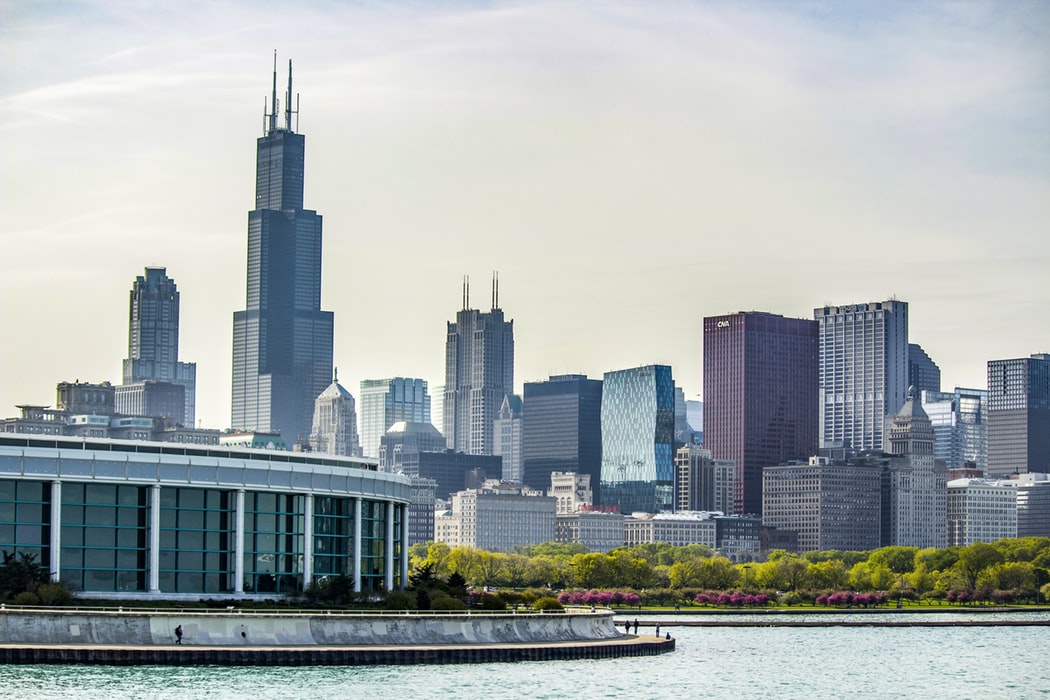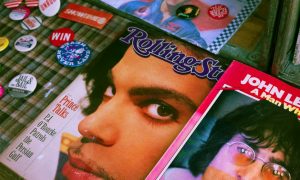In 1980, Nobel-prize-winning economist Milton Friedman visited The Phil Donahue Show, a television talk show, for a wide-ranging discussion of economics, free-market theory and the current state of the economy. During his highly decorated professional life, Friedman was an unabashed champion for the benefits of free-market capitalism and the invisible hand, the unintended social benefits of an individual’s self-interested actions. While Friedman was at times seen as a fan of big business, he frequently denied that accusation, stating instead that he was not a proponent of large companies, but he was only a supporter of the power of the free enterprise system in general. He also firmly stated that he was a champion not of economic fairness but in economic freedom for all people.
The large players in the retail store industry were of course very different in that era almost forty years ago, and Friedman and Donahue engaged in a discussion regarding large department store chains and the acquisitive nature of large American businesses. They also discussed powerful and growing companies and the potentially harmful effects of monopolies on the free enterprise system. Sears was an American business stalwart as it was the largest retailing chain in the nation and had been for forty years.
“So, you are saying Sears can buy Kmart if they wanted to?” Donahue challenged.
“Of course, they can,” Friedman replied, “but if Kmart keeps growing like it has been, Kmart may end up buying Sears!”.
Seen through the lens of almost forty years of business evolution, the debate involving these two store chains seems quite quaint and humorous now. The business marketplace has always been characterized by continuous dynamic change and certainly has been since this debate. Walmart was not even part of that discussion. Neither was Costco. Neither was Target. Walmart’s place in consumers’ lives grew strongly after tapping into consumer preference and needs and the firm grew to overtake Sears as the largest retailer in the world in 1989. Costco pioneered the membership-club store model in 1983 and is now the world’s second largest chain of retail stores. The first Target store opened in 1962, grew its store base strongly in the 1980s and 90s, and is now the third largest retail chain in the nation. Amazon, today’s internet retail giant, was not even a glint in corporate America’s eye in 1979. It opened its website in 1995.
In free-market capitalism, the quick and the smart usually beat the slow, complacent, and unimaginative. There is no greater example of this principle than Sears, which declared bankruptcy in September 2018. It is in the slow process of winding down its operations.
Sears, Roebuck and Company was founded in 1893 as a mail-order catalog for Midwest consumers who lived far from stores. Sears opened its first retail stores in 1925 and grew its store base quickly through the 1970s. A staple in our country’s retail consciousness for decades, Americans shopped at Sears for Toughskins jeans, Kenmore appliances, and Craftsman hardware tools. Customers waited at their mailboxes for the annual Sears Christmas catalog and got their autos repaired at a Sears Auto Center. Sears was the largest retailer in the United States until 1989. That’s when the rise of specialty stores, the convenience of online shopping, and a loss of corporate focus while diversifying into unrelated businesses such as finance, all combined to lead to Sears’ slow downfall into oblivion.
Sears was forced into the bankruptcy liquidation process in 2018 as there seemed to be no hope of reviving the store chain in a vastly different consumer world than it grew up in. But the constant change in the retail landscape marches on. Many of the owners of malls where Sears have stores could not have been happier. Mall owners with trendy retailers, popular restaurants and new entertainment venues continue to evolve and prosper, even in a time when many store chains have closed their doors. Many of these landlords welcomed Sears’ departure. The stores’ exits allowed them to take over these big-box spaces and lease them to a more profitable tenant. In malls where leases were signed decades ago, Sears’ rents were as low as $4 a square foot. New tenants in the same space could bring as much as six times that amount.
Although the failure of a large company like Sears may cause creditors to lose money, force unemployment on their workers for a short time, and cause the physical assets to lie dormant for a time, a corporate bankruptcy is simply the pruning of the free-market tree. Creditors will write-off the losses and re-focus attention on their more profitable loans. Employees will find new jobs with new companies or in new industries. And storefronts, manufacturing plants, equipment, and brands will be purchased by more profitable companies and revamped for new purposes. This creative destruction is at the heart of a dynamic free market system. Since the founding of our country, it always has been and always will be.
Over time many folks have worried that large companies may wield too much economic leverage in the market and have too much power over consumers and Congressman. However, being a large company does not save a business from bankruptcy as was shown in the cases of Sears, Chrysler, General Motors, and Penn Central Railroad. It may seem as if large businesses enjoy positions of great power, but a business cannot get a dollar from a consumer unless he hands it over willingly. All these businesses discovered that. The bigger they are, the harder they fall. Friedman did not fear corporate monopolies. He said instead, “The best anti-monopoly legislation you could have is completely free trade.” He was convinced by history that the market could take care of itself. The businesses that served consumers best would rise, and those that did not would falter.
Chrysler Corp. filed for bankruptcy in 2009 during the depths of the global financial crisis of 2008-09, but it also had a near-death experience in the late 1970s. Chrysler was only saved from bankruptcy at that time by a government bailout package that was passed by Congress in 1979 to keep Chrysler in business. The debate over the wisdom of that government intervention was raging when Friedman was a guest on that Donahue show. Donahue challenged Friedman on why it was not a good idea for the government to step in to save Chrysler:
Friedman noted, “The government should not help to save Chrysler, of course not. This is a private enterprise system. It’s often described as a profit system but that’s a misleading label. It’s a profit and loss system. And the loss part is even more important than the profit because it’s what gets rid of badly managed, poorly operated companies. Chrysler ought to be allowed to go broke.”
Chrysler was able to avoid bankruptcy in 1979, but it would not in 2009. The government did not step in to throw it a lifeline the second time, and the company went through bankruptcy, reorganized, discontinued some brands and products, and re-emerged as a stronger company. But that was only because consumers still wanted to buy Chrysler autos.
Sears is dead and gone due to the rapid and savage changes in the retail sector that it did not or could not keep up with. Sears did not lose its edge overnight. There was not one moment that it missed or one decision that sunk the once proud company. It took decades for the slow drip of time, inaction, and missed opportunities to doom the company to the ashbin of avoidable business failures.
Who knows. In forty years from today, we may look back and lament the slow slide of Walmart, Target, or Costco, who were bested by a new company founded this morning that no one currently knows about but will continue corporate America’s never-ending march of change.



